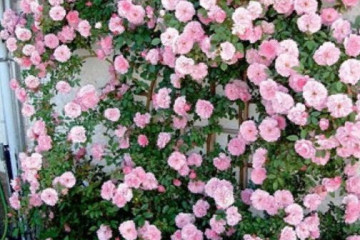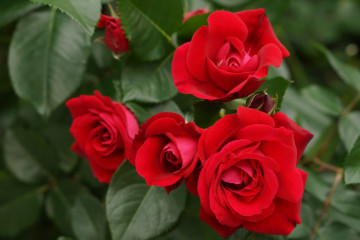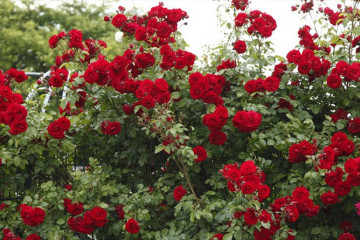Rose Aqua
Content:
Graceful, refined, bright - this is the Aqua rose. It has an interesting feature - the shade of its petals changes depending on weather conditions and the level of illumination.
Rose Aqua (Aqua): description, history of creation

There are very few thorns on the plant, so the variety is ideal for making bouquets
The hybrid was bred by the breeders of the Dutch company Schreurs (Petrus Nicolaas Johannes) by crossing a remontant and a tea rose. The name of the flower is patented by the Aqua trademark.
Main characteristics
Hybrid tea rose Aqua is a perennial shrub up to 80 cm high. Long green stems are crowned with large buds with a tall glass. The diameter of the flower is 9-12 cm. The corolla is dense; as it opens, the petals are bent back.
Advantages and disadvantages
Pros of the variety:
- Beautiful appearance, delicate aroma.
- High resistance to powdery mildew.
- The possibility of growing in the open field.
- Long flowering period - from early June to the first frost.
Minuses:
- Low frost resistance. After winter, shoots can freeze over.
- In rainy weather, some of the buds remain closed.
- There is a risk of black spot infection.
- Demanding for lighting, temperature, humidity.
Use in landscape design
Due to its long flowering, the shrub is used to decorate garden plots. Rose Aqua is perfect for decorating facades and paths in the garden. The bushes look spectacular in a composition with perennial flowers and meadow grasses.
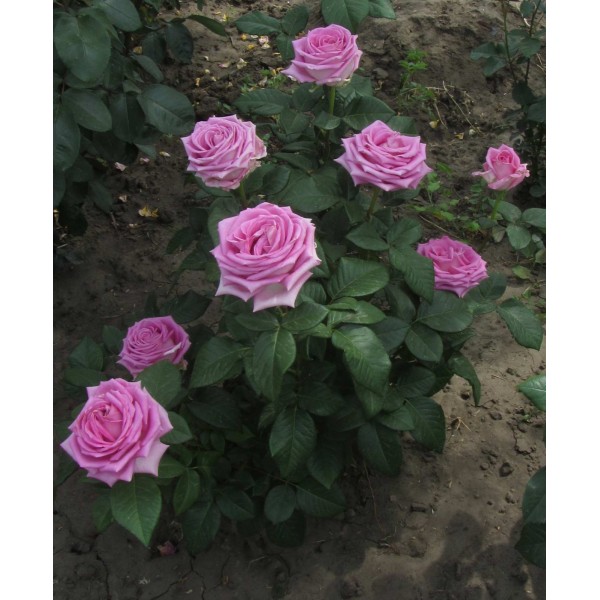
Rose Aqua - a bright accent that draws attention to the flower garden
Features of growing in the open field
The variety cannot boast of unpretentiousness, but compliance with simple rules ensures long flowering and fullness of colors.
In what form is the landing
Rose Aqua is a hybrid, so the seed propagation method is not suitable for it. It is better to purchase seedlings in a specialized store or nursery. Before buying, you must make sure that there is no damage to the shoots. To protect the rhizome, the seedlings are placed in a bag with a peat mixture. In this form, a young plant can be stored for up to three months.
What time is the boarding
It is better to plant the plant in September or October (three weeks before frost). Autumn planting is preferable because the bush will take root well by the time of flowering. Planting can also be carried out in early spring after the snow melts.
Location selection
The rose variety Aqua prefers well-lit areas that are shaded at peak solar activity. If the shrub is constantly in the sun, it fades very quickly. But even with a lack of light, abundant flowering should not be expected.
The site should be protected from cold winds by a fence or trees.
How to prepare the soil and flower for planting
To grow the variety, fertile soil is needed, the most suitable option is black soil. Coarse sand should be added to loamy soil.
Step-by-step sequence of actions when landing:
- Dig a planting hole based on the size of the root ball, plus 5 cm for the drainage layer.
- The distance between the holes is 50 cm.
- Pour small pebbles or expanded clay on the bottom.
- Place the seedling in the center of the hole, the root collar should protrude 5 cm above the surface.
- Cover with soil, water.
Plant care
Caring for rose bushes is within the power of even novice growers. The first year after planting is of great importance, when growth, development, laying and flowering take place.
Watering
The shrub should be watered at the root as the top layer of the soil dries out. It is better to do this in the early morning, and then loosen the soil to a depth of 5 cm.
Top dressing
The first feeding is applied after the appearance of the buds. For this, complex mineral fertilizers with a solution of ammonium nitrate (50 g per 10 l of water) are used. In the summer, after cutting the peduncles, the shrub should be fed with compositions with the addition of organic matter and trace elements. In autumn, potash-phosphorus fertilizers are used.
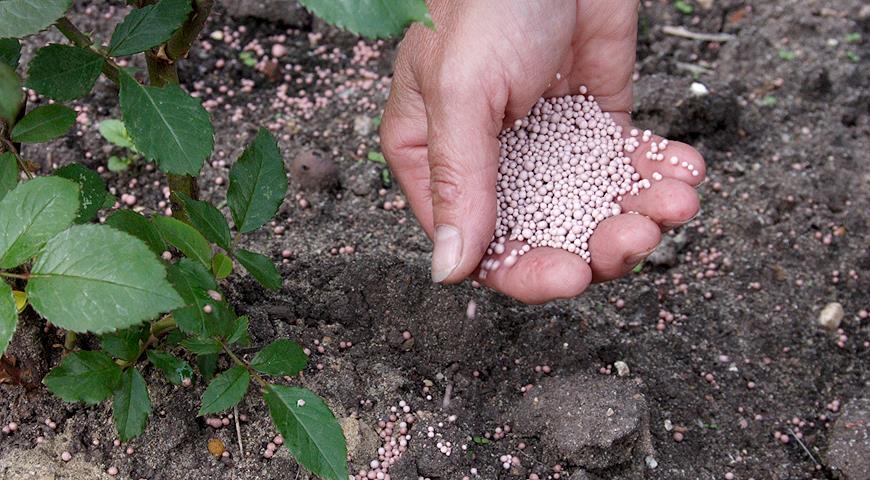
Top dressing is applied only to moist soil
Pruning
In the spring, the tops of the shoots should be removed, leaving 15 cm segments with 2-3 buds on a branch. Wilted flowers are cut in summer. All damaged branches are removed in autumn.
Wintering a flower
With the approach of frost, the bushes of the Aqua rose cover, after removing the remaining leaves and flowers. The root collar is spud. The bush itself is wrapped in non-woven fabric. In the spring, the shelter is removed, wild growth is removed.
Bloom
Rose Aqua blooms continuously throughout the summer. The first buds bloom in early June. Flowering ends in early October, the rest of the time the shrub is dormant.
During the period of activity, it is important to provide the plant with regular watering, the soil should not dry out. We must not forget about loosening and feeding. Withered buds must be cut off.
A lack of bloom signals a lack or excess of nutrients. The nitrogen content may be exceeded in the soil, the substance activates the growth of green mass. Phosphate-potassium fertilizer will help to solve the problem. In addition, you should make sure that the plant is not affected by disease and does not suffer from insect attacks.
Flower propagation
Rose Aqua propagates by cuttings. They are cut in the first decade of June. Sections of 15 cm with 3 buds are dropped into the soil and covered with a plastic bottle cap. Cuttings must be opened daily for watering.
The bush can be propagated by the method of division. An adult bush is dug up, divided into two, in each of which a root and a shoot should remain. The roots are moistened with a clay mash. After that, the plants are planted, watered and huddled.
Diseases and pests
High humidity threatens the development of fungal diseases:
- rust;
- gray rot;
- powdery mildew.
In case of infection, the affected leaves are removed and the bushes are sprayed with a fungicide.

To prevent diseases in the spring, the bushes are treated three times with Bordeaux liquid at intervals of a week.
Of the insects, the greatest threat is posed by spider mites, leaf rollers, and nematodes. Insecticides will help get rid of pests.
Rosa Aqua is famous for its long flowering, large bright inflorescences. The shrub needs grooming, but this will help it gain healthy green mass and increase resistance to disease. The variety can be grown for cutting or decorating the garden.
